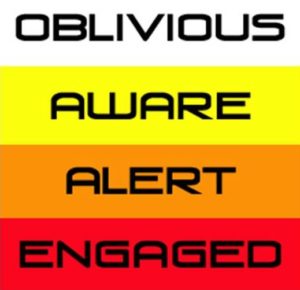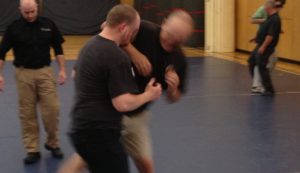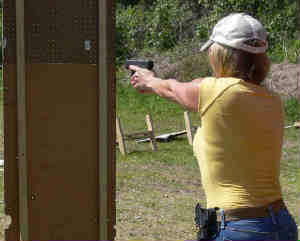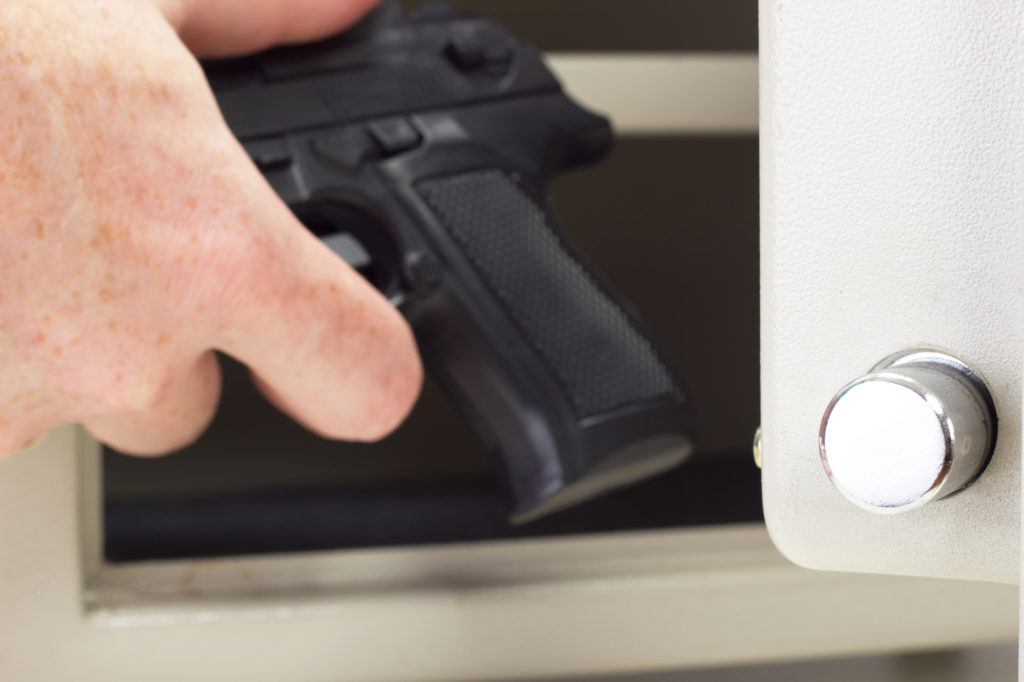The internet is awash with articles that talk about having a defensive mindset. Many of these articles have pretty good information, some are outright wrong but most are somewhere in the middle, mixing some good information in with lots of bad.
The most common problem with many of these articles is that they advocate a type of aggressive mindset that is rarely appropriate. These instructors might be reacting to a general trend toward passivity in modern society but end up swinging the pendulum too far the other way. Although I agree that society is filled with more sheep now than ever, nevertheless the one and only time unrestrained aggression is appropriate is the singularly rare instance that someone is actively trying to kill you. At other times, restrained aggression may be necessary, but more often than not results in unnecessary criminal charges.
It is appropriate and necessary to train for unrestrained, fight-for-your-life aggression against the time that this mindset is needed for survival. When we train this way, however, we also need to learn to switch the animal off when we leave the training environment. I also believe that we must train, not to be passive in the face of aggression or danger, but rather on how to apply restraint. We need to be somewhere in the middle – looking to avoid danger but willing to deal with it if it comes to us.
Possible indicators of an overly aggressive mindset advocated by some instructors are terms like “tactical”, “warrior”, or “combative” mindset, but because there is no standard definition of “tactical mindset”, this alone is not a surefire warning to steer clear. There may be instructors who use the “tactical” term to apply to a completely appropriate and prudent attitude toward training and personal defense.
Rather than “Tactical Mindset”, the term I prefer to use instead is “Defensive Mindset”. I may be splitting hairs over terminology, but I believe that having a defensive, and NOT offensive or combative attitude is critical. The reality is that if we train to defend ourselves, potentially even using tools such as a firearm to do so, this manifestly requires that our level of patience with others is exponentially increased. The last thing I want one of my students to come away from class with is a twisted justification about use of force that simply turns them into a bully, or worse, a criminal.
In the past, representatives from law enforcement have counseled members of the public, when faced with an armed criminal, to simply “give him what he wants” and “your wallet is not worth dying for”. While it is true, a wallet is not worth dying for, your wallet or your car may not be what the criminal wants. I do not believe that this overly passive mindset of appeasement is appropriate – certainly not for those who choose to carry a concealed firearm.
Defensive training encompasses far more than merely learning how to squeeze a trigger. A lot of focus is spent on honing fundamental shooting skills such trigger squeeze but far less is spent on learning the proper mindset. However, training to have an improved defensive mindset is critically important, probably even more so than shooting fundamentals themselves, certainly far more important than the “cool guy” stuff that a lot of the overly aggressive instructors tend to market their classes with. Nevertheless, no amount of training can prepare a student with exactly what to do for every situation. Instead the instructor can provide solid principles to follow, and empower the student to think for him or herself.
What does a Defensive Mindset look like when confronted with an attacker? I believe a good way to distill the concept down to simple principles goes like this:
- Comply with the attacker’s demands
- Only as much as is necessary to end the attack
- Only for as long as he holds the tactical advantage
- As soon as he loses the tactical advantage, resist the attacker
- Only as much as is necessary to end the attack
Ultimately, the goal of the Defensive Mindset is to End The Attack.
Of course, it is necessary to be able to intuitively judge what “Tactical Advantage” means.

For most people a good deal of estimating advantage will come naturally based upon the human instinct for survival. Furthermore, tactical advantage needs to encompass the level of perceived threat. For example, the threat of losing a wallet is very different from the threat of kidnapping, rape, or murder.
The ability to quickly judge tactical advantage relative to perceived risk can be augmented with training. Col Jeff Cooper’s Color Code of Mental Awareness is a good to place to start, and is included as part of many defensive courses. It is a useful framework to begin understanding a Defensive Mindset and it sets the stage for a deeper discussion on the subject. Other topics that should follow on after an introduction to the Color Code include:
- Recognizing body language and other cues that indicate imminent aggression
- Avoidance strategies and de-escalation tactics
- Learning how to leverage natural physiological and psychological reactions to become more efficient in your response to aggression
My hope is that students who are interested in adopting a Defensive Mindset will apply a very strict filter to all the various opinions available on the internet. We cannot allow ego or an over-active sense of justice to become vigilantism. A concealed carry permit is not a super-hero card. The Defensive Mindset inherently requires restraint, to attempt to avoid trouble at all costs, and also includes an obligation to set the best example possible.



